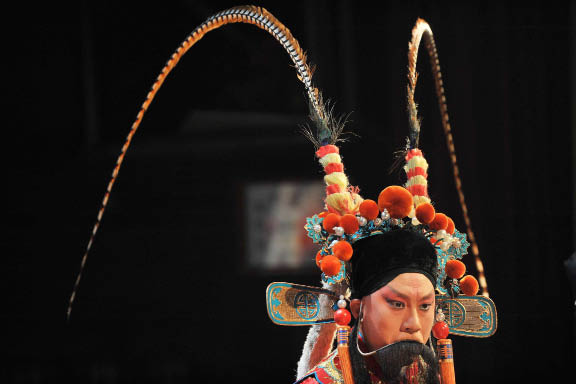| Ancient Culture Revitalizes in Modern Times
By staff reporter HOU RUILI
WITH Peking Opera and Chinese acupuncture being inscribed on UNESCO’s Representative List of the Intangible Cultural Heritage of Humanity last year, China has altogether 28 traditions included on the list. Furthermore, another six items have been inscribed on a sub list “In Need of Urgent Safeguarding.” However, those 34 items are just the tip of the iceberg, compared with 870,000 intangible cultural heritage items designated by the cultural departments of the Chinese government. The Law of the People’s Republic of China on the Intangible Cultural Heritage that came into force on June 1, 2011 will play a critical role in protecting the country’s vast heritage. The law stipulates that the state shall preserve the intangible cultural heritage by identifying, recording and filing, and protect the intangible heritage which reflects fine traditional culture of the Chinese nation and has historical, literary, artistic or scientific value through inheriting and spreading.
In October 2003, UNESCO adopted the Convention for the Safeguarding of the Intangible Cultural Heritage. China entered the Convention ten months later and has been elected twice as a member state of the Intergovernmental Committee for the Safeguarding of the Intangible Cultural Heritage, a body that bears the responsibility of guiding best practices for making recommendations on measures for safeguarding procedures, promoting the objectives of the Convention, and encouraging and monitoring its implementation. With the enforcement of the law on the intangible cultural heritage, China not only demonstrates its commitment to action with respect to the obligations stipulated by the Convention, but also shows its determination to guarantee cultural diversity.
From June 2005 to the end of 2009, China’s Ministry of Culture deployed a national survey on intangible cultural heritage. The statistics gathered so far indicate surveyors have collected 290,000 precious objects; made text records of about two billion Chinese characters; took innumerable photographs and recorded reams of audio and video content, covering about 870,000 items of intangible cultural heritage across China. The survey has provided an overall picture of the variety, amount and distribution of intangible cultural heritage throughout China and their protection.
Based on the survey, an inventory system has been devised containing national, provincial, prefectural and county-level lists. In 2006 and 2008, the State Council issued two lists specifying 1,028 national items. By December 2009 China had announced 7,109 provincial items, 18,186 prefectural items and 53,776 county-level items.
 |
| Show on the road: Dalian Peking Opera Theater performers in Shenyang City, Liaoning Province on October 3, 2010. China Foto Press |
Unique Skills under the Threat of Extinction
China is undergoing rapid economic development with accelerated industrialization and urbanization. The advancement of science and technology and increased productivity have improved people’s material lives, but at the same time changed their traditional way of living. As traditions and customs gradually become a vague and remote memory, we are faced with the dangerous possibility of their extinction. According to statistics released by the Department of Intangible Cultural Heritage of the Ministry of Culture, in 1949 there were 360 genres of traditional dramas across the country; the figure by 1982 was 317; once again, it decreased to 260 in 2004, and fell further to 226 in 2009. Within 60 years, 134 genres of traditional dramas have been lost, representing 35 percent of the total. The situation with traditional dance forms is similar. The data gathered two decades ago covering 19 Chinese provinces and municipalities showed that 2,211 traditional dances were still performed in those areas, but now only 1,389 items exist. A total of 853 items went extinct or face the danger of having no successors to carry forward the art. Within 20-odd years, 37 percent of dance forms have disappeared. In Hebei and Shanxi provinces, nearly two-thirds of traditional dances have been lost.
As some masters of unique skills get old, and the young, who are worried about their career prospects, are reluctant to learn those traditions, these intangible cultural heritage items are sinking into oblivion.
Pattra-leaf Scripture, which is made by inscribing Buddhist scriptures in the Dai language with an iron stylus on Pattra-leaves, was listed as a national intangible cultural heritage in 2008, as it involves a unique process and the traditional culture of the Dai ethnic group. However, fewer and fewer Dai people can make Pattra-leaf scriptures and most young people are unwilling to learn the craft.
|
